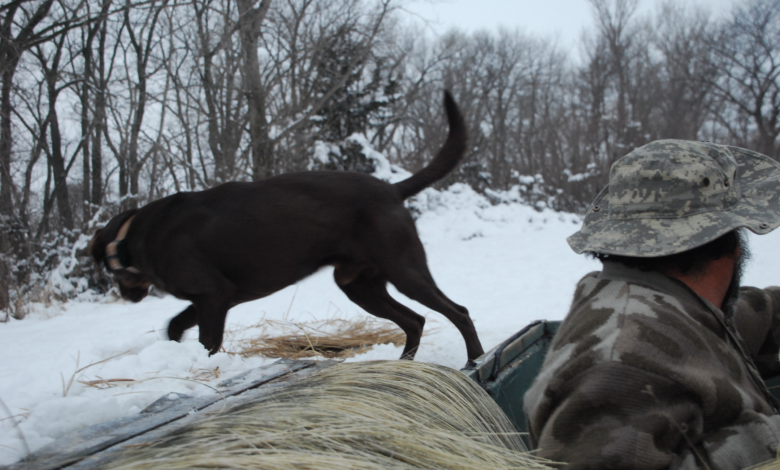Hunting – One of the Safest Activities in America

Most people would be surprised to learn that hunting is one of the safest recreational activities in America. Despite the stigma often associated with firearms, hunting is a relatively safe sport and a great way to spend time outside. But with over 15.9 million paid hunting license holders in the United States, according to the U.S. Fish and Wildlife Service, accidents are bound to happen sooner or later.
Situational Awareness and Emergency Preparedness
In addition to being knowledgeable of safe hunting practices to ensure the safety of themselves and others in the field, hunters should be equipped with comprehensive First Aid kits. While standard kits are likely to suffice in most situations, some emergencies require more specialized items, like a tourniquet or dressing for open chest wounds.
If you or someone in your party suffers a hunter-related shooting incident, you should have a chest seal that allows you to treat, seal and reseal open chest wounds. You can see more here about this essential item that every hunter should add to their kit for emergency preparedness.
Hunting Safety by the Numbers
While hunting is becoming more and more popular throughout the country, data released by the National Safety Council demonstrates that unintentional firearms-related fatalities continue to decline and remain at historically low levels.
From 1992 to 2012, unintentional firearms-related fatalities decreased by 57 percent and make up less than 0.5 percent of all unintended fatalities in the U.S. This improved safety is undoubtedly due to the proliferation of firearms safety education programs.
Still, accidents do happen. Every year, there are approximately 1,000 hunting-related firearms injuries resulting in an average of 100 fatalities from these mishaps in the U.S. and Canada. Interestingly, a staggering 90 percent of these incidents are the result of hunters accidentally shooting someone in their own party.
This statistic illustrates the importance of remaining ultra vigilant and taking the necessary safety precautions while hunting in a group, like being situationally aware at all times, communicating with your party and wearing a bright orange vest, among other safety measures.
Education Programs and Improved Safety
New York, for example, recently recorded the fewest hunter-related shooting incidents (HRSI) since the state’s hunter safety program was signed into law in 1949. Thanks in large part to the many volunteers that instruct various Hunter Education Programs, the current 5-year average in New York State is 1.5 incidents per 100,000 hunters.
It’s interesting to note that not all types of hunting are created equal. For example, deer hunting with firearms results in more than double the number of injuries (24.8 injuries per 100,000 hunters) when compared to hunting for small game (11.8 injuries per 100,000 hunters).
Injury Occurrences – Hunting Versus Other Recreational Activities
According to a report titled “A comprehensive study of sports injuries in the U.S.” by American Sports Data, Inc., hunting and shooting sports, in general, are among the safest and have the lowest occurrences of injury compared to other popular forms of recreation.
Compared to hunting, a person is over 100 times more likely to get injured playing tackle football. Moreover, individuals are 30 times more likely to be injured playing soccer or skateboarding, and 10 times more likely to be injured playing volleyball.
Being Truly Prepared for a Life-Threatening Emergency
In addition to the items that come in a basic First Aid Kit, hunters should also have the lifesaving items that address the MARCH acronym (massive hemorrhage, airway, respiration, circulation, head injury/hypothermia) found in the U.S. Army’s Tactical Casualty Combat Care Handbook. This acronym can help you remember the proper order of treatment for life-threatening injuries.
- Massive hemorrhage: Tourniquet – Management for all life-threatening extremity hemorrhages.
- Airway: Nasopharyngeal Airway – Also known as NPA or a nose hose, is used to maintain an open airway. An unconscious casualty who is breathing can benefit from the NPA.
- Respiratory: Chest Seal – In the event an individual suffers a puncture anywhere from the belly up to their neck, they could develop a tension pneumothorax (PTX) and suffer cardiac arrest. A chest seal can be used to seal an open wound, decompress suspected PTX and aid oxygenation/ventilation.
- Circulation: Gauze & Compression Bandage – If you cut yourself or sustain a puncture wound, controlling the bleeding takes precedence. You can use gauze to cover the wound and a compression bandage to maintain pressure and stop the bleeding.
- Head Injury: Use the AVPU scale (Alert, Verbally Responsive, Painfully Responsive, Unresponsive) to assess a casualty’s gross level of consciousness, responsiveness or mental status.
Being knowledgeable of potential emergencies and knowing how to treat casualties in the field goes hand in hand with being equipped with the right supplies to perform necessary treatments. You could have all the right supplies, but if you haven’t undergone the requisite education and don’t know how to use them, even the most expensive items are practically useless. While hunting is a relatively safe activity, it’s always a good idea to be prepared should you experience an emergency in the field.
